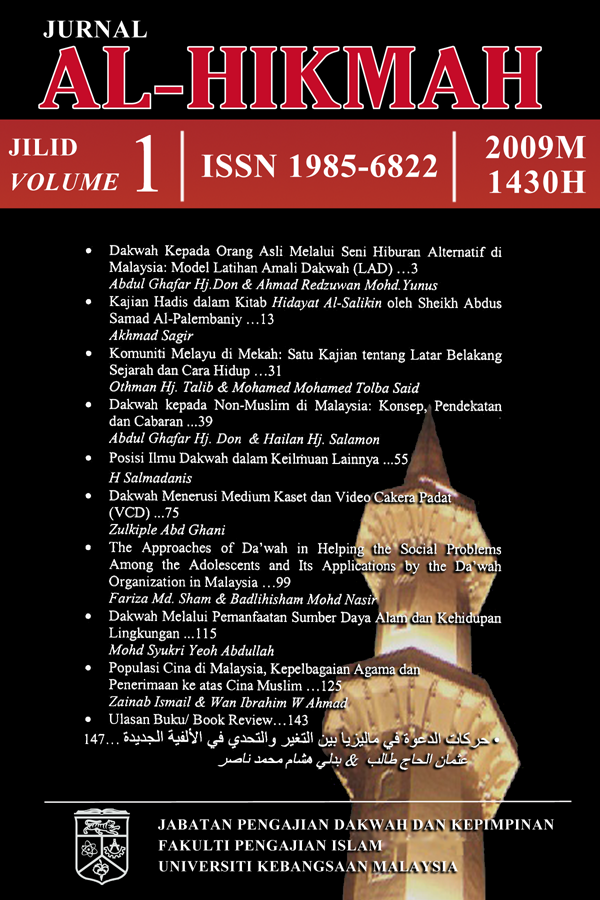THE MOVEMENT OF DA‘WAH IN MALAYSIA BETWEEN CHANGE AND CHALLENGE IN THE NEW MILLENNIUM
Pergerakan Dakwah di Malaysia Antara Perubahan dan Cabaran dalam Alaf Baru
Abstract
The new millennium for many people represents a new change for success and prosperity. While for the majority of Islamic workers in Malaysia, the arrival of the new millennium will give new hope to the further development of da'wah in Malaysia. Nevertheless, many people believe that the birth of the phenomenon of Islamic preaching in the early seventies will face great challenges (challenges) and obstacles. Many observers see that Islamic da'wah, especially the practical da'wah approach has lost its influence in society. This started to appear when Datuk Seri Anwar Ibrahim, the Pioneer of Malaysian Islamic Revival who then increased his preaching activities in the Government Machinery was removed. He was removed in 1998. However, the three largest Islamic movements, namely PAS, ABIM and JIM, which were not in the same direction before, seem to be joining hands in facing this new development. The approach is believed to be successful in attracting the target group of Malays and non-Muslims. Political tensions began to appear. It will invite new challenges that must be faced and must be dealt with wisely. This paper will discuss this issue with the help of Allah S.W.T.
References
Badlihisham Mohd Nasir, ‘‘Islamic Movements in Malaysia : A Change and Challenge in the Post Islamic Resurgence Period’’ XXII Vol. No. I Hamdard Islamacus.
Badlihisham Mohd Nasir, 1999. ‘‘The Political Dakwah Approach of PAS : A Historical Review’’. Jebat. Bil. 26.
Mohd Abu Bakar, 2000. ‘‘Dakwah di Persimpangan: Hala Tuju dan Masa Depan di Malaysia.’’ In Dakwah Gerakan Islam Alaf Baru. Bangi : Jabatan Pengajian Dakwah dan Kepimpinan.
Zulkiple Abd. Ghani, 1995. ‘‘Diffussion of Dakwah Through Broadcasting Media : The Experience of Radio Television Malaysia (RTM). Phd, thesis. University Edinburgh.
© 2025 Al-Hikmah.
Copyright of the published article is vested in UKM Press, Universiti Kebangsaan Malaysia upon formal acceptance and completion of the copyright transfer agreement.
All articles are licensed under a Creative Commons Attribution–NonCommercial 4.0 International License (CC BY-NC 4.0), which permits non-commercial use, distribution and reproduction in any medium, provided the original work is properly cited.





